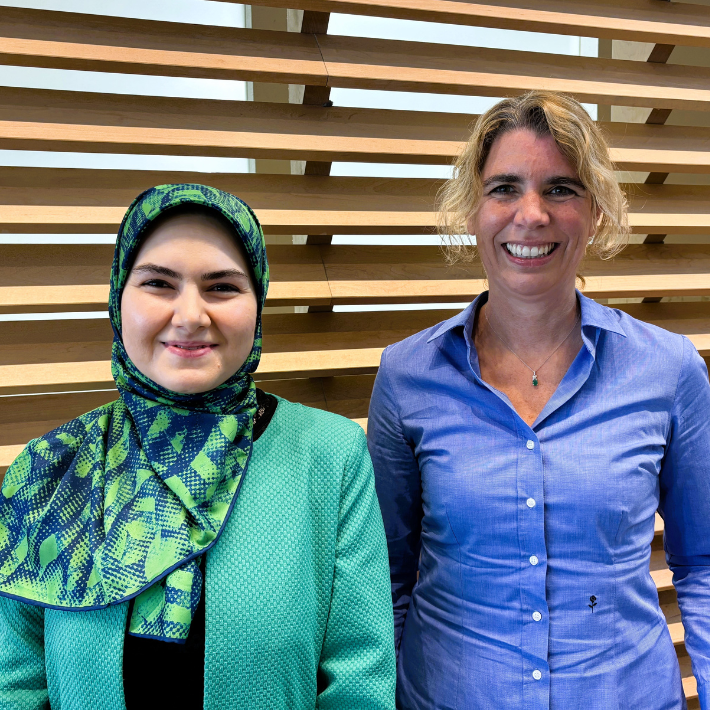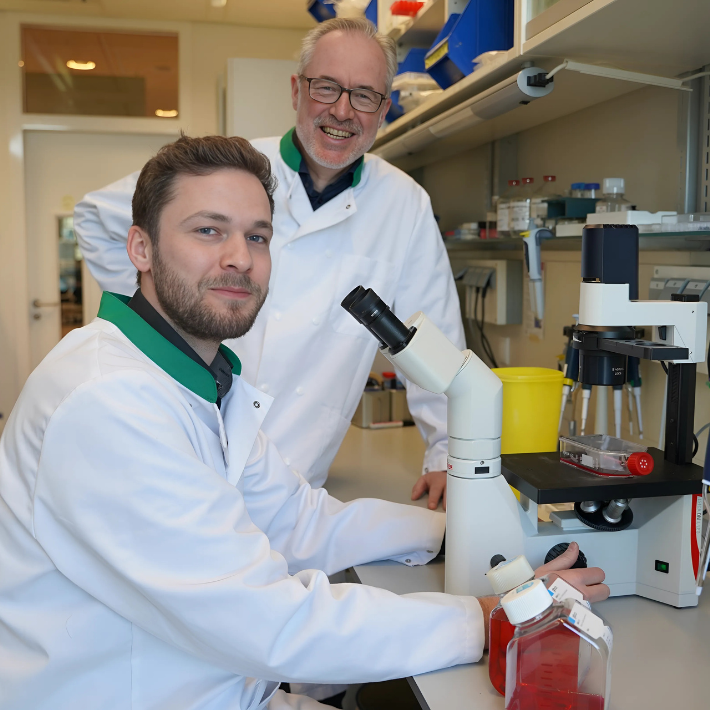Smart solutions for stem cell-based therapies
Researchers Bahareh Rajaei (left) and Françoise Carlotti (right)
&width=710&height=710)
Stem cells and regenerative medicine
Regenerative medicine is regarded as one of the most promising areas of medicine. It aims to replace or repair cells, tissues, or organs that are damaged or lost due to disease, injury, or aging. To do so, researchers employ so-called pluripotent stem cells. These unique cells are typically present in the early embryo. However, the use of embryonic stem cells in laboratory settings raises ethical concerns, which restrict their wide application. This changed in 2006, with the discovery of induced pluripotent stem cells (hiPSCs). hiPSCs are created in the laboratory by ‘resetting’ adult cells (such as skin cells or blood cells) to a pluripotent state, which allows them to transform into a large variety of cell types. hiPSCs can proliferate indefinitely in the laboratory, making them a virtually unlimited source to produce new cells and tissues of choice for transplantation.
Towards the next generation of islet replacement therapy
Through these unique characteristics, hiPSCs offer tremendous potential to treat chronic diseases. Worldwide, many researchers work on methods to grow hiPSC-derived cells and tissues for clinical use. Françoise Carlotti, group leader at LUMC, explains: “In our laboratory, we specifically aim to develop and apply these methods for the production of clinically safe and effective islets from hiPSCs. These insulin-producing cells (beta cells) typically reside in the pancreas but are lost in patients with type 1 diabetes due to an autoimmune response. As a result, these patients heavily rely on insulin therapy to manually manage blood sugar levels. The generation of insulin-producing islets from hiPSCs would be a real gamechanger for them, as we would have an unlimited supply of cells to restore insulin production.”
There are very strict requirements to bring cell therapies to the clinic to ensure the safety of the cell product. A crucial element is the purity of the grown cells. Indeed, despite the careful protocol, other cell types also arise during the culture process that could potentially harm the patient.
Why make it difficult when it can be easy?
Carlotti and her team developed a method to increase the purity of the stem cell-derived islets in a simple way. Bahareh Rajaei, first author of the paper: “Cells can have different densities due to variations in their content and structure. For instance, pancreatic islet cells have a higher density than other cell types, because the cells contain secretory granules – cellular cargo units – that are full of insulin. The stem cell-derived islets can then be separated from the unwanted cells by applying density gradient centrifugation.” A density gradient is a fluid composed of several layers, each with its own density, to which the cells are added. During centrifugation, heavier cells move to the bottom while lighter cells remain at the top. In this way, the cells are divided into layers according to their density. After centrifugation, each layer is collected separately. “This procedure not only improves the purity of the cell product but also allows us to reduce the volume of tissue needed for the transplantation. Both leading to a safer product”, Bahareh said.
It is the first time this method has been used for stem cell-derived cell products. Although the method was now used to purify insulin-producing islets, it could be applied to other stem cell-derived products as well. It is therefore of value to the field of regenerative medicine as a whole.
Future prospectives
To further streamline the production, Carlotti and her team optimized other parts of the protocol as well, such as the way the hiPSCs are differentiated into insulin-producing islets in the laboratory. hiPSCs are typically cultured in plastic dishes. The cells grow in a single layer on the surface of the dish. The number of stem cell-derived cells is thus limited to the surface area of the dish. Carlotti: “We now grow the stem cell-derived islets in suspension using spinner flasks. This will help scale up the culture to produce larger numbers of insulin-producing islets.”
Through the improved methodology, the study presents a major step towards the generation of a hiPSC-derived therapy for type 1 diabetes at the LUMC. Carlotti: “There are high expectations for the field of regenerative medicine, and we are excited to be part of this adventure.”
Want to know more about this research?
The study was published in Science Translational Medicine.
This research was supported by the Dutch Diabetes Research Foundation, the RegMedXB consortium, the DON Foundation, , the Bontius Foundation, and the Novo Nordisk Foundation Center for Stem Cell Medicine reNEW.

&width=710&height=710)